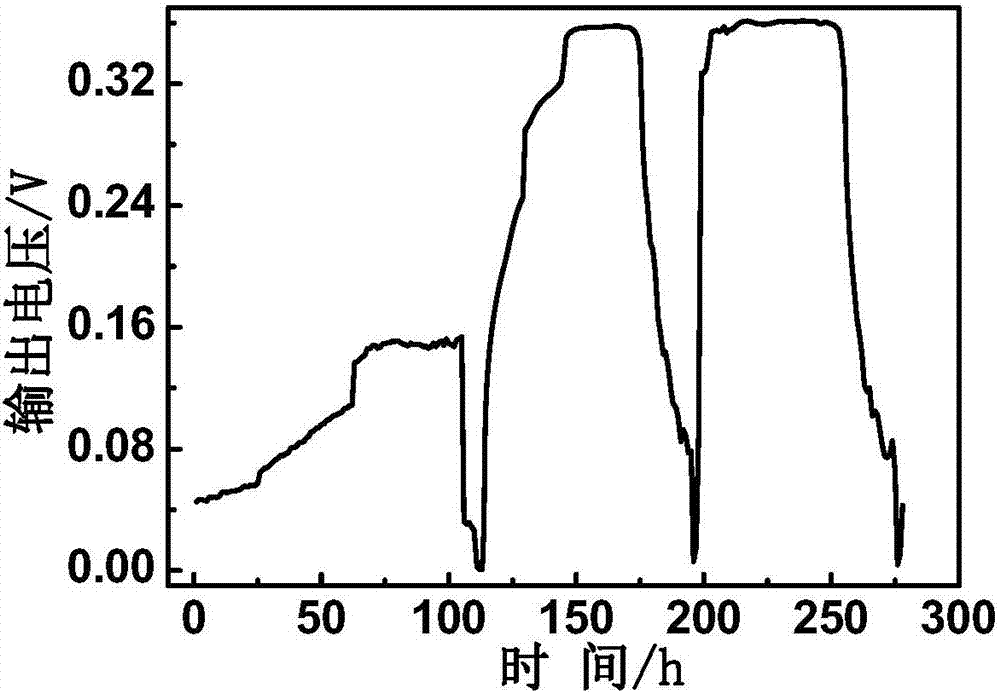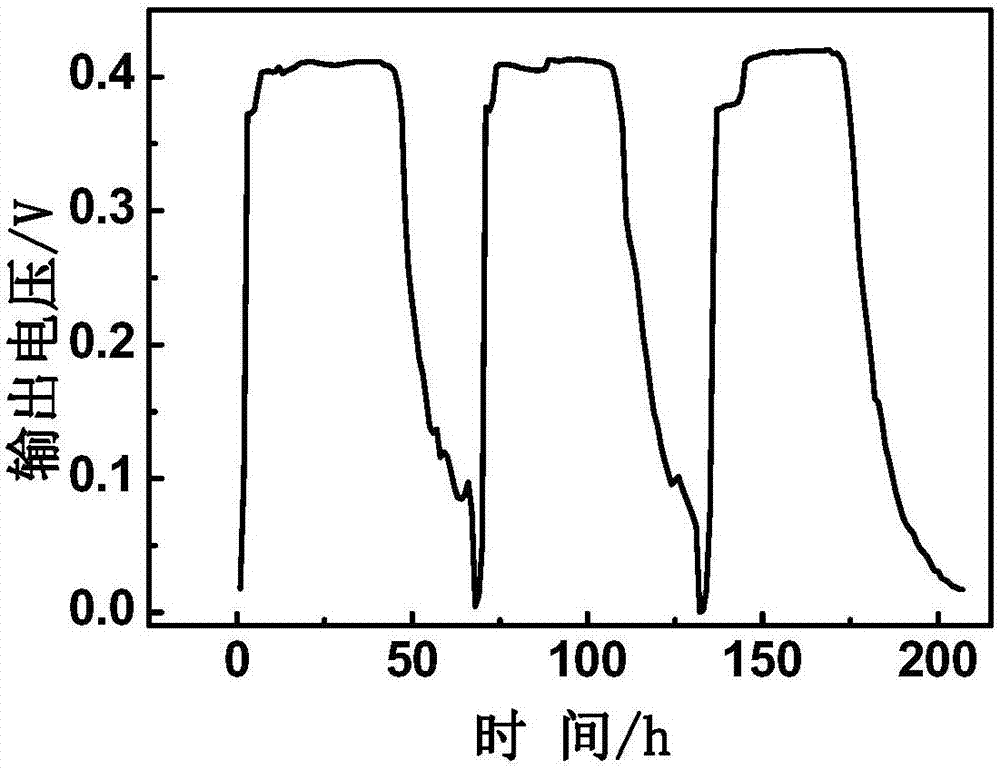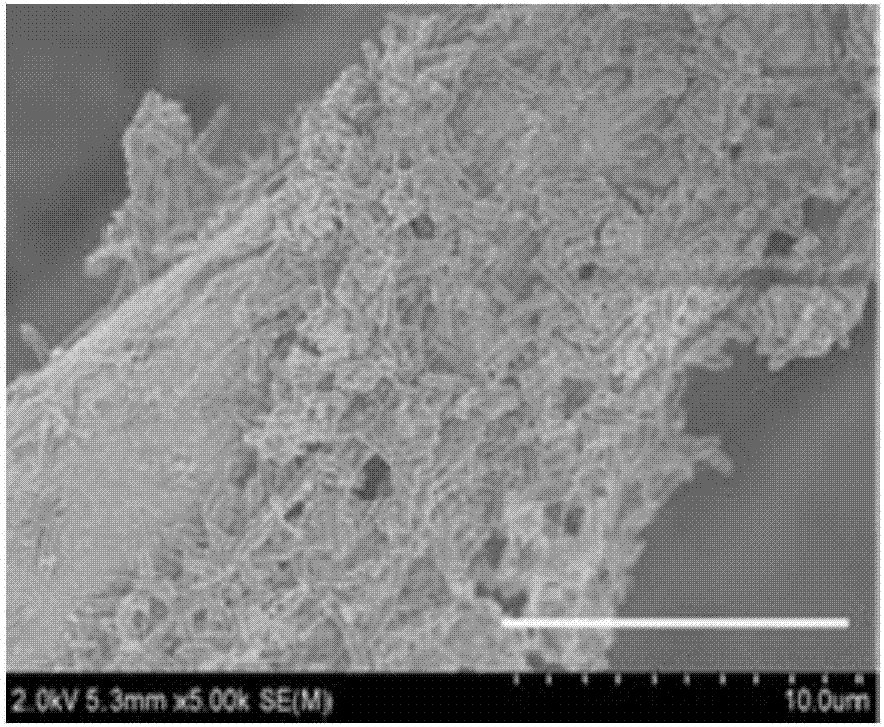Rhodococcus pyridinovorans and application thereof in microbial fuel cell
A technology of Rhodococcus pyridinephilus and Rhodococcus pyridine, which is applied in the field of Rhodococcus pyridinephilus and its application in microbial fuel cells, can solve the problems that the electricity production activity of Rhodococcus pyridinephilus has not been found, and achieve low battery operation cost, Improve the output voltage, the effect of good adaptability
- Summary
- Abstract
- Description
- Claims
- Application Information
AI Technical Summary
Problems solved by technology
Method used
Image
Examples
Embodiment 1
[0030] Example 1: Isolation and identification of Rhodococcus pyridinovorans HR-1
[0031] Using the landfill leachate from a waste incineration plant in Guangdong Province as the anolyte of a single-chamber air-cathode microbial fuel cell, the single-chamber air-cathode microbial fuel cell was started. The single-chamber air-cathode microbial fuel cell uses carbon cloth as the cathode and anode electrodes, Pt / C as the cathode catalyst, and an external 1000Ω resistor. The single-chamber air-cathode microbial fuel cell was placed in a biochemical incubator at 30°C for static cultivation. Monitor the output voltage of the battery online, and the maximum output voltage reaches 0.35V. After the output voltage of the battery is stable, continue to cultivate for one month, and the output voltage of the battery is stable (see figure 1 ).
[0032] Disassemble the battery, cut a small piece of anode carbon cloth, insert it into LB liquid medium for expansion culture, and then apply L...
Embodiment 2
[0044] Embodiment 2: take sodium acetate as the electricity production situation of fuel
[0045] The Rhodococcus pyridinovorans (Rhodococcus pyridinovorans) HR-1 obtained in Example 1 was inoculated into LB liquid medium, and the bacteria were activated on a shaking table at 30°C and 160 rpm for 36 hours, so that the number of bacteria reached the exponential growth phase, and the bacteria The solution was centrifuged at 4000rpm for 10 minutes, washed three times with PBS, and resuspended in 0.2mol / L sodium acetate solution (that is, the anolyte containing fuel) as the anode inoculum of the microbial fuel cell.
[0046] The cathode and anode electrodes are made of carbon cloth, Pt / C is the cathode catalyst, and a single-chamber air cathode microbial fuel cell with an external resistance of 1000Ω is assembled and sterilized, and then the anode inoculum prepared above is inserted into the battery to shorten the battery life Start-up time, the number of bacteria in the anode ino...
Embodiment 3
[0047] Example 3: Electricity production using glucose as fuel
[0048] The difference with embodiment 2 is:
[0049] The anolyte containing fuel is a 0.2mol / L glucose solution, and the number of Rhodococcus pyridinovorans HR-1 cells in the anode inoculum reaches 1×10 6 cells / L, the battery was placed in a biochemical incubator at 30°C for static cultivation, and the maximum output voltage of the battery was stabilized at 0.40V by online monitoring, indicating that Rhodococcus pyridinovorans (Rhodococcus pyridinovorans) HR-1 can be effectively degraded in a microbial fuel cell system Glucose gets electricity.
PUM
| Property | Measurement | Unit |
|---|---|---|
| diameter | aaaaa | aaaaa |
Abstract
Description
Claims
Application Information
 Login to View More
Login to View More - R&D
- Intellectual Property
- Life Sciences
- Materials
- Tech Scout
- Unparalleled Data Quality
- Higher Quality Content
- 60% Fewer Hallucinations
Browse by: Latest US Patents, China's latest patents, Technical Efficacy Thesaurus, Application Domain, Technology Topic, Popular Technical Reports.
© 2025 PatSnap. All rights reserved.Legal|Privacy policy|Modern Slavery Act Transparency Statement|Sitemap|About US| Contact US: help@patsnap.com



